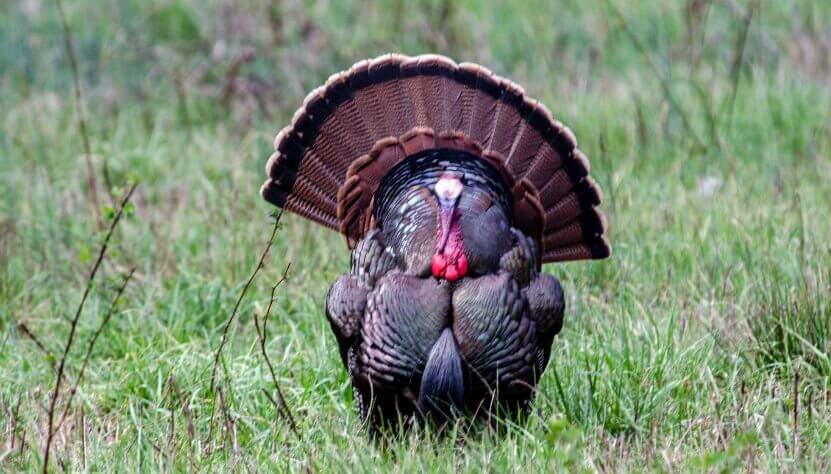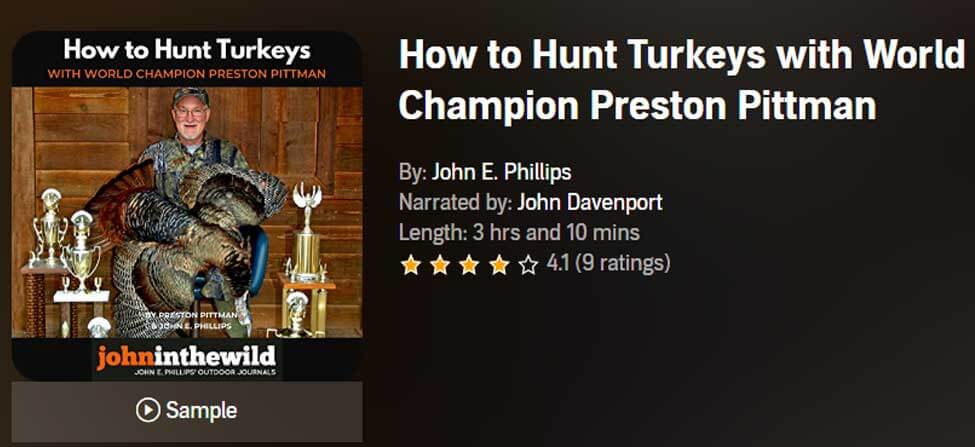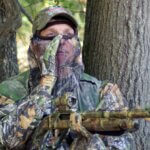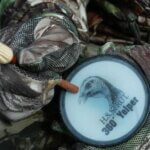Editor’s Note: No hunter can give exact rules for solving problems with any particular turkey, because each gobbler has a personality based on his genetic make-up, how long he’s lived, and how-many hunter encounters he’s had. Also, turkeys are very moody with changes in their likes and dislikes occurring almost daily. One day a turkey may gobble aggressively and come to any type of calling. The next day you go to hunt him, he may not gobble at all, and/or he may shy away from calling. Wild turkeys are very-complex birds. But if you hunt long enough, you will encounter toms nobody can take. The more you hunt them and learn about them, the greater your odds for bagging one. This week I’ll give tactics to help you take tough toms at the end of the season.

Turkeys that see numbers of hunters and have many hunter encounters become very wary of any human. Many times, these toms will gobble very little or not at all. Try several tactics to take toms where the hunting pressure is intense.
- Hunt when no one else hunts. If you study the hunter-movement patterns of any area, you’ll soon discover that most of the turkey-hunting pressure exerted on any woodlot usually occurs from 1 to 2 hours after daylight. In many parts of the country, turkey hunting is a 3-hour sport participated in before work. Gobblers soon learn the safest time to talk and walk in the woods when they’re least likely to encounter a hunter is from 9:30 am to 2:00 pm in states where turkey hunting’s permitted all day.
- Go to where the turkey has been. Most turkey hunters in high-pressure areas hunt the gobblers on the roost. After the turkeys leave the roost, and the sportsman has chased the birds, the hunter rarely will go back to call at the roost site or in the region where the turkey has flown-down. However, after 9:00 or 10:00 am, turkeys often will return to the same site they’ve flown down to or near the same spot where they have roosted. Return in the middle of the day to where the turkey has been in the morning to take a tom after all the other hunters have left.

- Hunt the strut zones. In high-pressure places, you may increase your odds for bagging a bird by not calling to him in the morning like all the other hunters do. Turkey toms have certain places where they strut and drum and show-off to hens without gobbling. Often these strut zones are on hills or ridges where a tom can see all the way down a ridge and on either side of a hill and feels secure. If you can identify these regions and reach them before the turkey does, often you can call him a little and bag him.
- Take a nap. To bag a bird in a high-pressure area, call a little, and wait a lot. However, since patience isn’t a virtue of mine, often I’ll take a nap to force myself to slow-down my hunting. If I’ve hunted a turkey from daylight until 9:00 or 10:00 am, I’ll return to the last place I’ve called to the bird, sit down next to a big tree, get comfortable, yelp three or four times and go to sleep. If I wake up 10 to 15 minutes later, I’ll yelp one or two more times and go back to sleep. I may repeat this process for an hour. Sometimes I’ll be awakened by the sound of a tom drumming and strutting in front of me that has come in but never has gobbled.
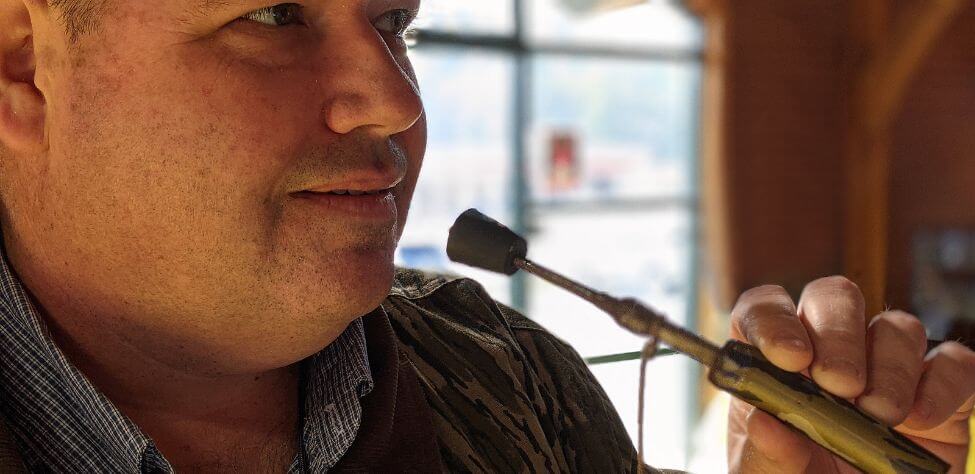
- Use a different call. If you can determine the type of call – a diaphragm, a slate or a box – that most hunters in the area you’re hunting are utilizing, then when you use a different type of call, you’ll increase your odds for bagging a bird.
- Do not call, but hunt instead. In many high-pressure places where the turkeys won’t gobble or gobble very little, your only opportunity to take a bird may be to hunt him, instead of calling to him. You must learn where the tom goes, when he goes there, and what he does when he arrives there. Once you know the bird’s routine, take a stand along the route he travels every day. Don’t call. Wait on the gobbler to appear.
Tomorrow: Hunt All Types of Turkeys
Check out John E. Phillips’ 12th book: “Turkeys: Today’s Tactics for Longbeards Tomorrow“

- hunting strategies with pros Will Primos, David Hale, Eddie Salter, Preston Pittman, Allen Jenkins, Terry Rohm, Paul Butski, Larry Norton and others.
- information about taking turkeys with .410 shotguns.
- box-call techniques.
- strategies for moving on turkeys.
- ways to hunt public-land gobblers.
- the differences in calling and hunting Eastern, Osceola and Western turkeys.
- the latest research on turkeys; and other information.
Click here to check out John’s 12th turkey book.
Expert Guidebooks on Turkey Hunting: Best Sellers
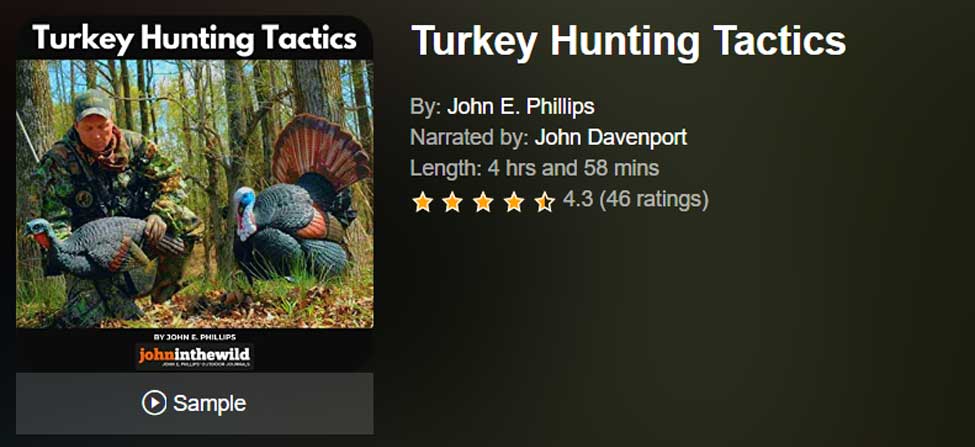
Turkey Hunting Tactics
This turkey hunting audiobook has entertaining chapters like: “How to Miss a Turkey”, “Hunting with a Guide”, and “The Turkey and the New York Lady”.
You’ll learn about all the subspecies of turkey across North America, how to use a turkey call, how to scout before turkey season, how to find a turkey to hunt, and what hunting gear you’ll need to put the odds in your favor to take a wily gobbler.
VERSIONS: AUDIBLE, KINDLE & PRINT
How to Hunt Turkeys with World Champion Preston Pittman
You easily can take a turkey if you don’t make any mistakes, but you have to know what the deadly sins of turkey hunting are to keep you from making those mistakes. If you understand how to hunt a turkey, you’re far more likely to take a gobbler than if you just know how to call a turkey.
Of course, calling is important, and if you want to learn to call a turkey, Preston Pittman will teach you how to call turkeys with box calls, friction calls, diaphragm calls, and other turkey sounds.
You’ll also learn why Preston Pittman once put turkey manure all over his body to kill a tough tom.
When you have turkeys that strut and drum in the middle of a field, when you know there’s no way to get close enough to get a shot, Pittman will show you some weird tactics that have worked for him to help you hunt tough ole toms.
But the main thing you’ll learn in this book is how to become the turkey.
Using what he’s learned while hunting wild turkeys, he’s also become a master woodsman who can take most game, regardless of where he hunts. To learn more secrets about how to be a turkey hunter from one of the world champions of the sport, this turkey-hunting book with Preston Pittman is a must.
VERSIONS: AUDIBLE, KINDLE & PRINT
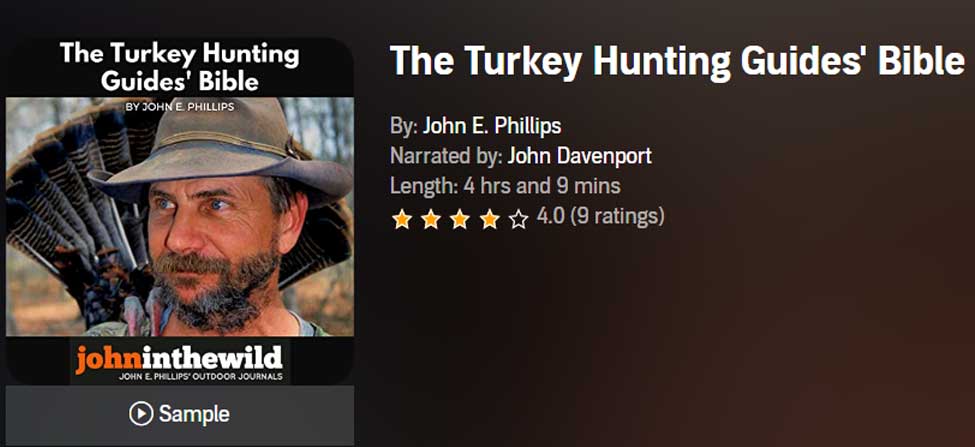
The Turkey Hunting Guides’ Bible
The quickest way to learn how to turkey hunt successfully is to either hunt with a turkey hunter with years of experience or a turkey-hunting guide. These two types of turkey hunters have solved most of the problems turkey hunters ever will face.
Just as one size of shoes won’t fit every person, one style of turkey hunting doesn’t fit each hunter. Each turkey-hunting guide interviewed for this book has his own style of calling, hunting, and outsmarting turkeys.
While listening to this book, make a list of the new information you’ve learned, take that list with you during turkey season, and try some of the new tactics. Then you’ll become a more versatile turkey hunter and prove the wisdom from The Turkey Hunting Guides’ Bible.
VERSIONS: AUDIBLE, KINDLE & PRINT
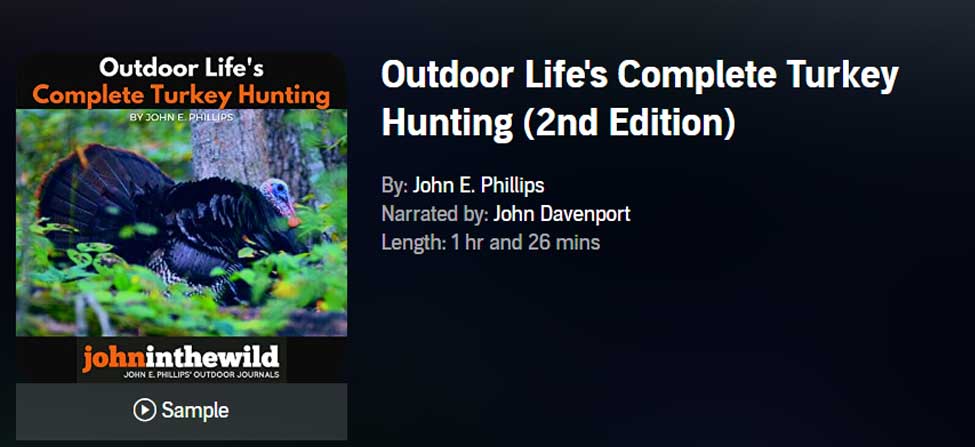
Outdoor Life’s Complete Turkey Hunting (2nd Edition)
This Audible book will help you learn how to call turkeys with two of the nation’s best, longtime and well-known turkey callers, Rob Keck, formerly with the National Wild Turkey Federation, and Lovett Williams, a wildlife biologist who recorded wild turkeys giving the calls that you’ll learn how to make on various types of turkey callers.
VERSIONS: AUDIBLE & KINDLE
Expert Guidebooks on Turkey Hunting: Best Sellers

Turkey Hunting Tactics
This turkey hunting audiobook has entertaining chapters like: “How to Miss a Turkey”, “Hunting with a Guide”, and “The Turkey and the New York Lady”.
You’ll learn about all the subspecies of turkey across North America, how to use a turkey call, how to scout before turkey season, how to find a turkey to hunt, and what hunting gear you’ll need to put the odds in your favor to take a wily gobbler.
VERSIONS: AUDIBLE, KINDLE & PRINT
How to Hunt Turkeys with World Champion Preston Pittman
You easily can take a turkey if you don’t make any mistakes, but you have to know what the deadly sins of turkey hunting are to keep you from making those mistakes. If you understand how to hunt a turkey, you’re far more likely to take a gobbler than if you just know how to call a turkey.
Of course, calling is important, and if you want to learn to call a turkey, Preston Pittman will teach you how to call turkeys with box calls, friction calls, diaphragm calls, and other turkey sounds.
You’ll also learn why Preston Pittman once put turkey manure all over his body to kill a tough tom.
When you have turkeys that strut and drum in the middle of a field, when you know there’s no way to get close enough to get a shot, Pittman will show you some weird tactics that have worked for him to help you hunt tough ole toms.
But the main thing you’ll learn in this book is how to become the turkey.
Using what he’s learned while hunting wild turkeys, he’s also become a master woodsman who can take most game, regardless of where he hunts. To learn more secrets about how to be a turkey hunter from one of the world champions of the sport, this turkey-hunting book with Preston Pittman is a must.
VERSIONS: AUDIBLE, KINDLE & PRINT

The Turkey Hunting Guides’ Bible
The quickest way to learn how to turkey hunt successfully is to either hunt with a turkey hunter with years of experience or a turkey-hunting guide. These two types of turkey hunters have solved most of the problems turkey hunters ever will face.
Just as one size of shoes won’t fit every person, one style of turkey hunting doesn’t fit each hunter. Each turkey-hunting guide interviewed for this book has his own style of calling, hunting, and outsmarting turkeys.
While listening to this book, make a list of the new information you’ve learned, take that list with you during turkey season, and try some of the new tactics. Then you’ll become a more versatile turkey hunter and prove the wisdom from The Turkey Hunting Guides’ Bible.
VERSIONS: AUDIBLE, KINDLE & PRINT

Outdoor Life’s Complete Turkey Hunting (2nd Edition)
This Audible book will help you learn how to call turkeys with two of the nation’s best, longtime and well-known turkey callers, Rob Keck, formerly with the National Wild Turkey Federation, and Lovett Williams, a wildlife biologist who recorded wild turkeys giving the calls that you’ll learn how to make on various types of turkey callers.
VERSIONS: AUDIBLE & KINDLE



